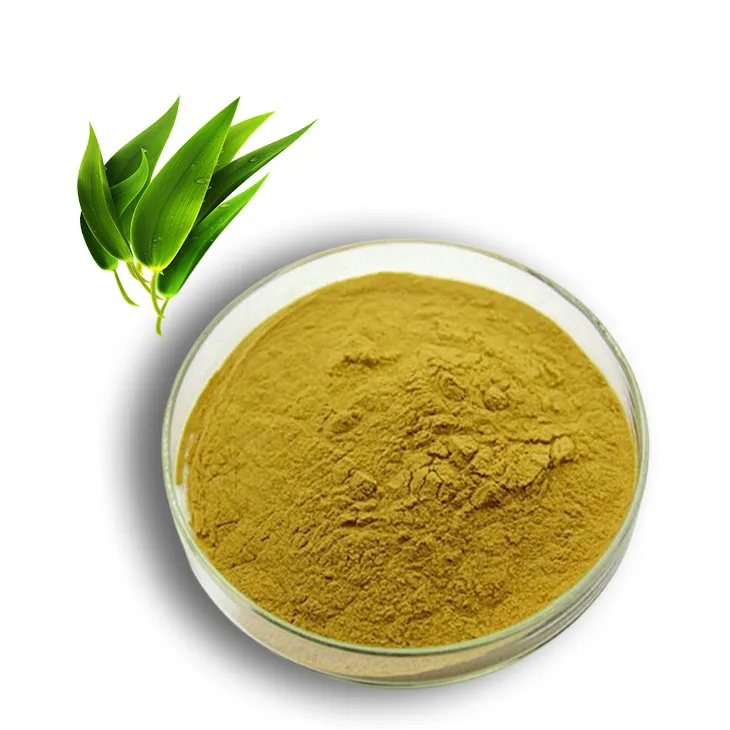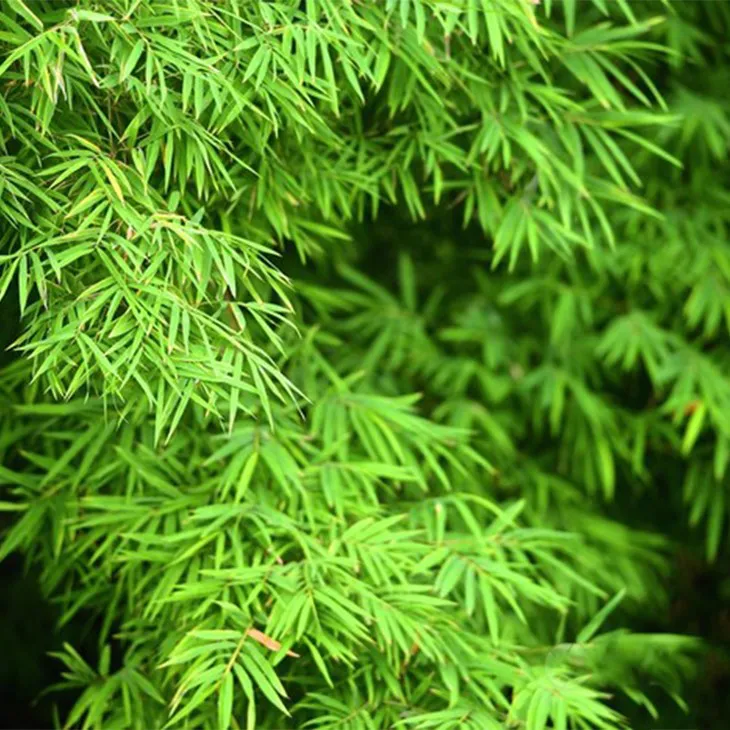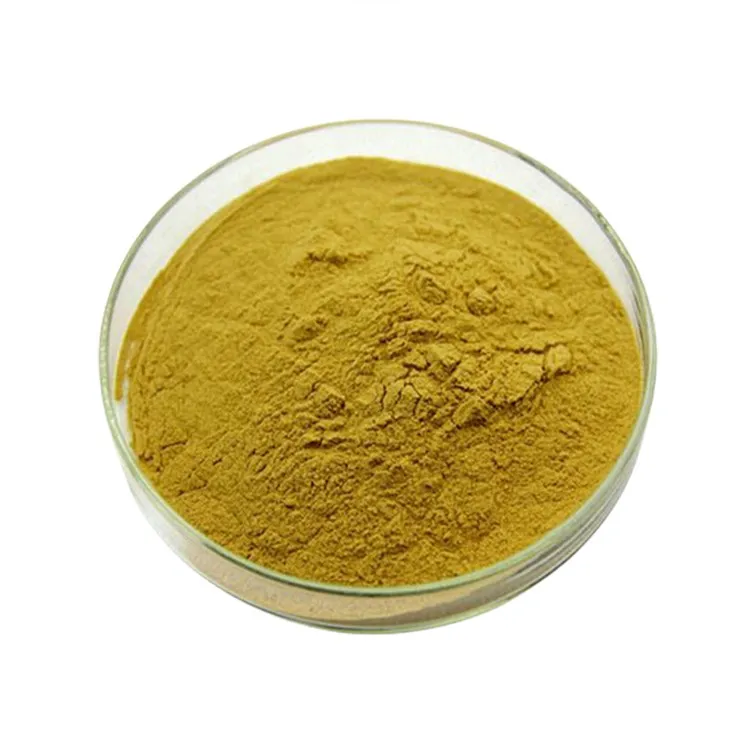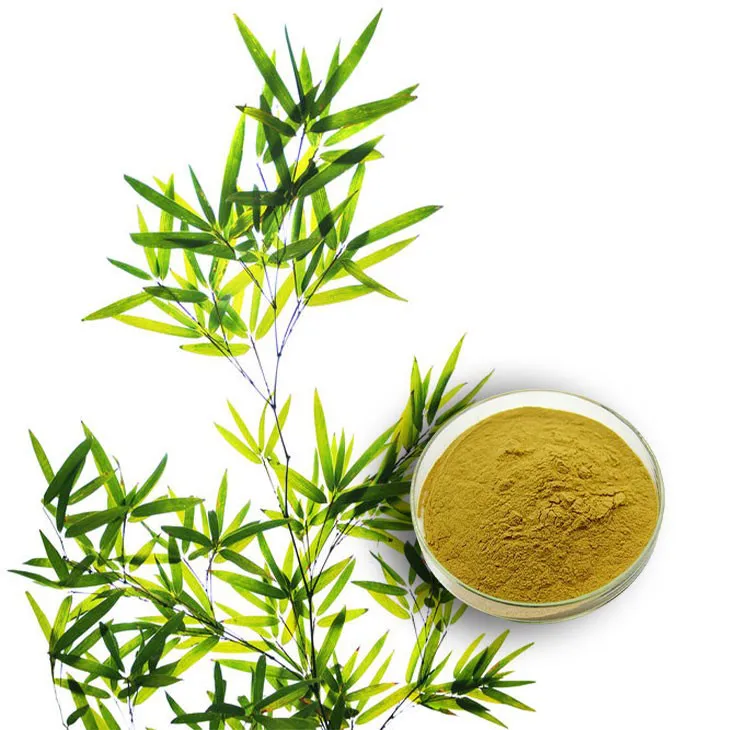- 0086-571-85302990
- sales@greenskybio.com
Extraction process of bamboo leaf extract.
2024-11-28

1. Introduction
Bamboo Leaf extract extraction is a significant process for deriving valuable substances from bamboo leaves. Bamboo leaves are rich in various bioactive compounds, such as flavonoids, phenolic acids, and polysaccharides. These compounds have potential applications in medicine, cosmetics, and food industries. Therefore, the extraction process needs to be carefully designed to obtain high - quality Bamboo Leaf extract.

2. Selection of Bamboo Leaves
The selection of bamboo leaves is the first and crucial step in the extraction process.
2.1 Species Consideration
Different species of bamboo may have different compositions of bioactive compounds. For example, some species may be rich in flavonoids, while others may contain more polysaccharides. Therefore, it is necessary to select the bamboo species that are known to have a high content of the desired compounds. Phyllostachys pubescens is one of the commonly used bamboo species for extract production due to its relatively high content of bioactive substances.
2.2 Condition of Leaves
The leaves should be in good condition. They should be free from diseases, pests, and excessive damage. Leaves that are damaged or infected may have a lower content of bioactive compounds or may even contain harmful substances. Only healthy leaves can ensure the quality of the extract.

3. Pretreatment of Bamboo Leaves
After the selection, the bamboo leaves need to be pretreated before extraction.
3.1 Washing
The bamboo leaves are washed thoroughly to remove dirt, dust, and other impurities. This can be done by using clean water. Gentle agitation may be applied to ensure that all the surfaces of the leaves are cleaned. Washing is important as it can prevent the introduction of unwanted substances into the extract during the subsequent extraction process.
3.2 Drying
After washing, the leaves are dried under controlled conditions. The drying process can be carried out in the shade or in a drying oven with appropriate temperature and humidity settings. Drying helps to reduce the moisture content of the leaves, which is beneficial for the extraction process. If the leaves have a high moisture content, it may lead to problems such as microbial growth during extraction or affect the efficiency of solvent penetration.

4. Extraction Methods
There are several methods for extracting Bamboo Leaf extract, and one of the common methods is the maceration method.
4.1 Maceration Method
- First, the dried bamboo leaf powder is prepared. The dried leaves are ground into a fine powder. This increases the surface area of the plant material, which allows for better contact with the solvent.
- Then, the bamboo leaf powder is soaked in a suitable solvent. Ethanol is a commonly used solvent due to its ability to dissolve a wide range of bioactive compounds. The ratio of bamboo leaf powder to solvent can be adjusted according to the desired concentration of the extract. For example, a ratio of 1:10 (w/v) may be used.
- The mixture is then left to soak for a certain period. This period can range from several hours to several days, depending on the nature of the compounds to be extracted and the extraction conditions. During this time, the solvent penetrates the plant material and dissolves the desired components.
- After the soaking period, the extract is decanted or filtered. Decanting involves carefully pouring off the liquid extract from the solid residue. Filtering can be done using filter paper or a filtration device to separate the extract from the remaining solid particles. This step is important to obtain a clear extract.

5. Purification of Bamboo Leaf Extract
After extraction, the bamboo leaf extract may contain a mixture of different components. Purification is necessary to obtain a high - quality extract with specific bioactive compounds.
5.1 Chromatography Techniques
Chromatography techniques are widely used for the purification of bamboo leaf extract. There are different types of chromatography, such as high - performance liquid chromatography (HPLC) and column chromatography.
-
High - performance liquid chromatography (HPLC): HPLC can separate different components based on their chemical properties, such as polarity and molecular size. The extract is injected into a column filled with a stationary phase, and a mobile phase is passed through the column. Different components will elute at different times, allowing for their separation. HPLC can provide high - resolution separation and is suitable for the purification of complex mixtures.
-
Column chromatography: Column chromatography is a more traditional method. A column is packed with a suitable adsorbent material, such as silica gel or alumina. The extract is loaded onto the top of the column, and different solvents are used to elute the components. Components with different affinities for the adsorbent will be separated as they are eluted from the column.
6. Applications of Bamboo Leaf Extract
Once a high - quality bamboo leaf extract is obtained through the above extraction and purification processes, it can be used in various fields.
6.1 Medicine
Bamboo leaf extract has potential medicinal properties. Some bioactive compounds in the extract, such as flavonoids, have antioxidant, anti - inflammatory, and antibacterial activities. They can be used in the development of new drugs or as dietary supplements for promoting health.
6.2 Cosmetics
In the cosmetics industry, bamboo leaf extract can be used in skin care products. The antioxidant properties of the extract can help to protect the skin from free - radical damage, reduce wrinkles, and improve skin elasticity. It can also be added to hair care products to nourish the hair and improve its shine.
6.3 Food Industries
The bamboo leaf extract can be used as a natural food additive. It can enhance the flavor and nutritional value of food products. For example, it can be added to beverages to provide a unique flavor and health - promoting benefits.
7. Conclusion
The extraction process of bamboo leaf extract involves several important steps, including the selection of bamboo leaves, pretreatment, extraction, and purification. Each step is crucial for obtaining a high - quality extract with desired bioactive compounds. With the increasing demand for natural products in various industries, bamboo leaf extract has great potential for further development and application.
FAQ:
What are the important factors in the selection of bamboo leaves for extraction?
The important factors include that the bamboo leaves need to be of the right species and in good condition. The right species ensures that the leaves contain the desired substances for extraction, and being in good condition means they are free from diseases, pests, and excessive damage, which can affect the quality and quantity of the extract.
Why is drying the bamboo leaves under controlled conditions necessary?
Drying under controlled conditions is necessary to ensure proper moisture content. If the drying process is not controlled, it may lead to the degradation of some bioactive compounds in the bamboo leaves. Also, proper drying helps in maintaining the stability of the leaves so that they can be effectively processed during extraction, and it helps to prevent the growth of mold or bacteria which could contaminate the leaves.
What are the advantages of the maceration method in bamboo leaf extract extraction?
The maceration method has several advantages. Firstly, it is a relatively simple and cost - effective way to extract components from bamboo leaves. By soaking the dried bamboo leaf powder in a solvent, the solvent can gradually penetrate the plant material and dissolve the desired components over a period of time. This method also allows for a relatively large amount of material to be processed at once, and it can be used with a variety of solvents depending on the specific components to be extracted.
How does chromatography work in the purification of bamboo leaf extract?
Chromatography works based on the different chemical properties of the components in the bamboo leaf extract. Different components have different affinities for the stationary phase and the mobile phase in the chromatography system. As the sample passes through the chromatography column or medium, the components are separated because they move at different rates. Components with a stronger affinity for the stationary phase will move more slowly, while those with a stronger affinity for the mobile phase will move more quickly, thus achieving separation of different components.
What are the potential applications of bamboo leaf extract in the food industry?
Bamboo leaf extract can be used in the food industry in several ways. It may be used as a natural preservative due to its potential antimicrobial properties. It can also be added as a flavor enhancer or a source of natural antioxidants. Some bioactive compounds in the bamboo leaf extract may have health - promoting properties, which can be incorporated into functional foods or dietary supplements.
Related literature
- Extraction and Characterization of Bioactive Compounds from Bamboo Leaves"
- "The Potential of Bamboo Leaf Extract in Cosmetic Applications: A Review"
- "Bamboo Leaf Extract: A Promising Source for Medicinal Applications"
- ▶ Hesperidin
- ▶ citrus bioflavonoids
- ▶ plant extract
- ▶ lycopene
- ▶ Diosmin
- ▶ Grape seed extract
- ▶ Sea buckthorn Juice Powder
- ▶ Beetroot powder
- ▶ Hops Extract
- ▶ Artichoke Extract
- ▶ Reishi mushroom extract
- ▶ Astaxanthin
- ▶ Green Tea Extract
- ▶ Curcumin Extract
- ▶ Horse Chestnut Extract
- ▶ Other Problems
- ▶ Boswellia Serrata Extract
- ▶ Resveratrol Extract
- ▶ Marigold Extract
- ▶ Grape Leaf Extract
- ▶ blog3
- ▶ blog4
-
D - Mannose Manufacturer
2024-11-28
-
The best organic chia seed powder.
2024-11-28
-
The extraction process of Maca extract.
2024-11-28
-
Yam Extract
2024-11-28
-
Panax Ginseng Leaf Extract
2024-11-28
-
Citrus Aurantium Extract
2024-11-28
-
Hops Extract
2024-11-28
-
Kelp Extract Powder
2024-11-28
-
Feverfew Extract
2024-11-28
-
Hericium erinaceus extract powder
2024-11-28
-
Ginger Extract
2024-11-28
-
Genistein
2024-11-28
-
Avocado Extract Powder
2024-11-28





















